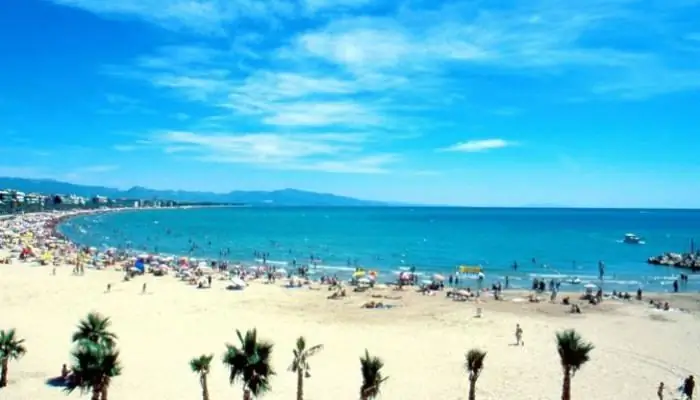- Author Harold Hamphrey [email protected].
- Public 2023-12-17 10:06.
- Last modified 2025-01-24 11:10.
Only at a superficial glance and from a distance, Spain seems the same. But it so happened over the centuries that it consists of different and little similar historical territories. They are different, but together they are Spain. Toledo is one of its most famous historical provinces. Its capital of the same name with the whole province of the name is more than two thousand years old. It is difficult to determine the exact age, but in modern outlines the city was founded by the Roman general Mark Fulvius a couple of centuries before the birth of Christ. After that, more than twenty centuries of a very eventful history passed through which the country now known to us as Spain passed. Toledo, on the other hand, has always been very close to the center of all historical cataclysms, numerous wars, the conquest of the country by the Moors, their expulsion from the Pyrenees and the subsequent reconquista.

City of Toledo, Spain. Features & Attractions
The provincial capital is located southwest of Madrid, not far from the center of the country. All the fireworks of historical events were very clearly reflected in the appearance of the city that today appears to our eyes. What is most surprising here is the visual authenticity of history, the degree of preservationthe historical center of the city - it has not changed much since the Middle Ages. Perhaps this is not a unique case for a country like Spain. Toledo, in terms of the preservation of the medieval architectural urban environment, surpasses many of its other, no less ancient and famous cities. But in terms of concentration in a relatively small area of architectural monuments, Toledo has few competitors in the world.

As in other Spanish cities, manifestations of Islamic and Jewish spiritual traditions are visible in many places. But in general, the architecture of the Gothic style, whose birthplace is Spain, dominates here. Toledo has its brightest example, it is the main city cathedral of Santa Maria of the thirteenth century. Of course, this is not the only Catholic church in the city; the ancient churches of San Roman and Santiago de Arrabal are no less significant. An excellent example of Gothic fortifications is the Alcazar of Toledo. The last battles in it thundered in the twentieth century, during the Spanish Civil War. The oldest monuments on the territory of the city are the ruins of the amphitheater from the times of the Roman Empire and a well-preserved aqueduct of the same historical period. The oldest monument of Jewish culture throughout Western Europe is the building of the twelfth century synagogue of Santa Maria la Blanca. Islamic culture is represented by the Mosque del Cristo de la Luz.

El Greco Museum. Toledo, Spain
One of the main cultural attractions of Toledo isMuseum of El Greco. Toledo had an undeniable influence on the work of this brilliant Spanish painter. In terms of the completeness of the collection, the collection of paintings by the master in the museum is second only to the famous Madrid Prado. One could already go to Toledo for the sake of the El Greco museum alone.






